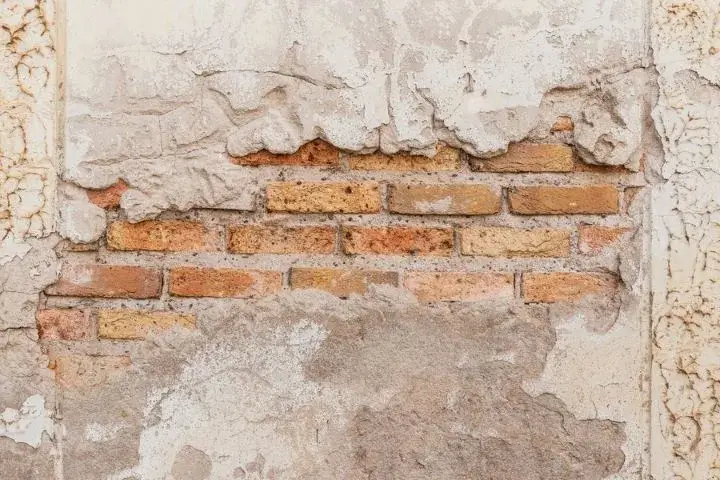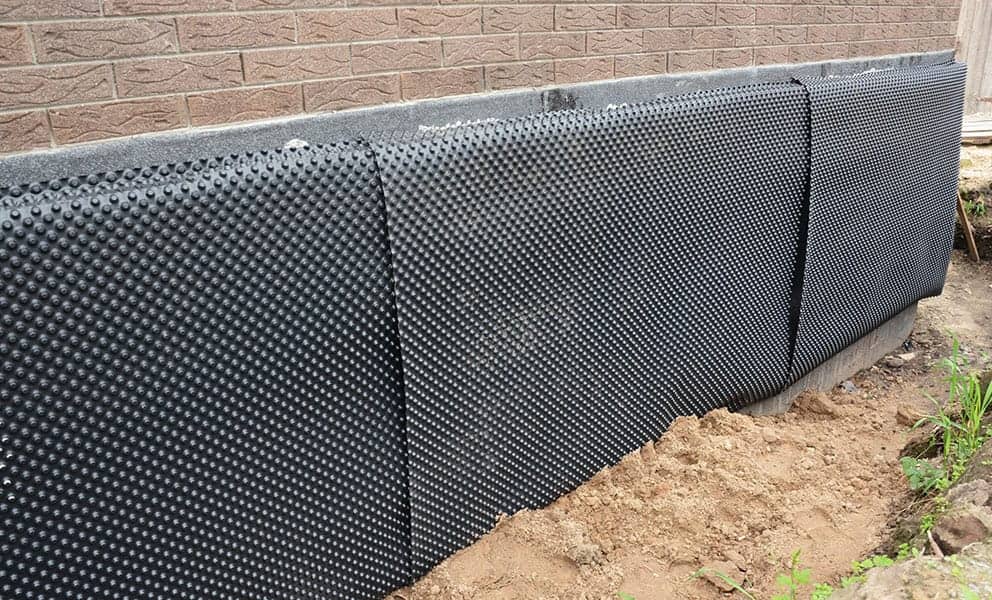Checking Out the Various Techniques and Solutions for Effective Damp Proofing
Moisture in structures positions substantial difficulties to both architectural honesty and interior air quality. Different methods and solutions have emerged to combat this pervasive concern. From conventional damp-proof membrane layers to ingenious chemical therapies, each approach uses one-of-a-kind benefits. Understanding these options is essential for reliable wetness control. Nonetheless, selecting the appropriate option depends on certain structure conditions and needs, triggering more expedition right into one of the most effective wet proofing techniques readily available.
Comprehending the Sources Of Wetness
Dampness can occur from various sources, recognizing these reasons is crucial for efficient removal. Frequently, moisture originates from 3 key sources: climbing moist, permeating moist, and condensation. Increasing moist occurs when groundwater takes a trip up-wards through permeable materials, such as brick or stone, often due to an absence of an efficient obstacle (mould removal newcastle). Permeating damp is commonly triggered by outside elements, including roof leaks, faulty seamless gutters, or damaged wall surfaces, enabling water to infiltrate a residential property. Condensation, on the other hand, results from excess wetness airborne, usually exacerbated by poor air flow and temperature level differences, causing water beads forming on surface areas. Determining these underlying issues is necessary, as each type of moisture needs a customized technique for remediation. Appropriate analysis assists in identifying the most effective remedies, inevitably securing the structural integrity of a building and boosting interior air top quality
Typical Damp-Proof Membrane Layers

Chemical Damp-Proofing Solutions
Chemical damp-proofing remedies supply an innovative approach to avoid dampness invasion in buildings. These methods generally involve the application of liquid chemicals that permeate stonework and develop a barrier versus rising wet. Frequently utilized chemicals include silanes, siloxanes, and various other water-repellent agents that respond with surface area products to develop a hydrophobic layer.The application procedure normally requires drilling openings into the walls, injecting the chemical solution, and allowing it to heal. This technique is especially advantageous for older structures where traditional damp-proof membranes may be unwise. Furthermore, chemical damp-proofing can be less turbulent and much more cost-efficient than substantial restoration projects.While effective, these solutions depend on appropriate application and environmental conditions for peak performance. Regular maintenance and surveillance are important to ensure the long life of the damp-proofing treatment. On the whole, chemical damp-proofing represents a functional option for safeguarding structures against moisture-related damage
Dental Caries Wall Surface Building And Construction Methods
Dental caries wall building methods use numerous benefits, particularly in wetness control and energy performance. By including an air void between 2 layers of masonry, these wall surfaces efficiently alleviate water access while improving insulation. This combination not just protects frameworks from wetness but additionally contributes to reduced power usage.
Advantages of Dental Caries Wall Surfaces
When thinking about reliable wet proofing techniques, the benefits of cavity walls stick out prominently. Cavity wall surfaces contain 2 separate layers, producing an air space that efficiently lowers dampness penetration. This design decreases the threat of dampness, as the external wall works as an obstacle versus rainfall and water ingress. Additionally, tooth cavity walls boost thermal insulation, which adds to energy effectiveness by lowering heat loss. They likewise offer audio insulation, helping to create a quieter indoor environment. Moreover, the air void permits ventilation, which helps in wetness control and reduces the likelihood of mold and mildew development. These advantages not just boost the general convenience of a building however likewise contribute to its durability and architectural honesty.
Dampness Control Strategies
Effective moisture control strategies are essential in cavity wall surface building and construction to assure long-lasting security versus moisture. One main method entails the unification of weep holes, which promote water drain from the dental caries, preventing build-up. In addition, making use of breathable membrane layers can assist manage wetness levels while permitting entraped vapor to leave. Correct placement of insulation is likewise important, as it must not obstruct water drainage paths. Making sure that the outer leaves of the dental caries wall surface are built with water-resistant products boosts total toughness. Regular upkeep checks are important to determine any clogs or damage early, securing the structure's integrity. Inevitably, a mix of these methods creates a robust protection against dampness intrusion in dental caries walls.
Insulation and Energy Efficiency
Insulation plays an essential role in enhancing power effectiveness within dental caries wall construction. By integrating shielding materials, these wall surfaces create a thermal obstacle that minimizes warm loss and minimizes energy consumption. Efficient insulation not just assists preserve a secure indoor temperature however also mitigates the threat of moisture, as it prevents condensation within the wall tooth cavity. Numerous strategies, such as the usage of rigid foam boards or mineral wool, can be utilized to attain suitable insulation performance. Furthermore, proper installation is necessary to guarantee that voids and voids are minimized, which can otherwise compromise power performance. Eventually, a well-insulated tooth cavity wall adds considerably to total sustainability and lowers cooling and heating prices for home owners.
Exterior Damp Proofing Approaches
Outside moist proofing approaches are important for protecting structures from moisture infiltration. 2 efficient techniques include the application of water-proof membrane layers and the setup of French drains. These options assist minimize water accumulation and preserve the integrity of structures.
Waterproof Membrane Application
While various methods exist for preventing dampness ingress, the application of water resistant membranes remains an extremely effective outside moist proofing strategy. These membrane layers are usually made from products such as polyethylene, rubber, or modified asphalt, giving a durable obstacle versus water infiltration. The installment process entails applying the membrane to the exterior surfaces of wall surfaces or foundations, ensuring full coverage to prevent leakages. Proper bond and sealing at joints are important to making the most of efficiency. Waterproof membranes can be applied in various types, consisting of fluid finishes and sheet membrane layers, allowing for flexibility based upon the certain demands of the framework. This method not just secures buildings from moisture yet also enhances their durability and structural stability.
French Drainpipe Setup
One reliable approach for managing groundwater and protecting against wetness buildup around a building's foundation is the installation of a French drainpipe. This drain system is composed of a trench full of gravel and a perforated pipeline that reroutes surface water away from the foundation. Proper setup calls for cautious preparation, guaranteeing that the drainpipe slopes far from the structure to help with perfect water flow. In addition, the location of the drain is essential; it ought to be placed in areas susceptible to pooling or excess moisture. Regular upkeep, consisting of clearing debris from the crushed rock and ensuring the pipeline remains unhampered, is important for long-lasting performance. Ultimately, a well-installed French drain can significantly minimize the threat of water-related issues in structures and basements.
Interior Waterproofing Methods
Interior waterproofing techniques are crucial for shielding a structure's interior from moisture infiltration and potential water damage. These techniques usually entail the application of customized materials and methods created to create a moisture obstacle within the framework. One typical method is using waterproof finishes or sealants on wall surfaces and floorings, which protect against moisture from penetrating surfaces.Additionally, mounting interior drain systems, such as sump pumps, can properly manage water accumulation in cellars and creep spaces. Another method includes using vapor barriers, which are set up to hinder wetness motion from the ground into living spaces.Moreover, attending to any type of fractures or spaces in wall surfaces or foundations with appropriate sealants guarantees a comprehensive protection against water invasion. By applying these indoor waterproofing approaches, homeowner can greatly lower the risk of mold and mildew growth, architectural damages, and various other moisture-related issues. Proper implementation of these methods is vital for lasting protection and structure honesty.
Routine Maintenance and Evaluation Practices
Regular upkeep and evaluation practices are important for guaranteeing the lasting efficiency of wet proofing options in any building. Regular checks enable property proprietors to recognize very early signs of wetness intrusion, such as peeling paint, mold growth, and moldy odors. These indications can indicate underlying problems that need instant attention.Inspections need to be performed at the very least every year, concentrating on susceptible areas like cellars, creep spaces, and exterior wall surfaces. Throughout these analyses, residential property owners need to analyze sealers, drainage systems, and air flow to validate they function correctly.Additionally, preserving rain gutters and downspouts is important, as blocked systems can cause water build-up near the foundation. Applying a normal maintenance routine, together with timely repair work, can considerably expand the lifespan of moist proofing steps and safeguard the architectural integrity of the building. Aggressive procedures eventually add to the total health and wellness of the living setting.
Often Asked Inquiries
For How Long Does Damp Proofing Commonly Last?
The period of moist proofing effectiveness varies, commonly lasting between 20 to 50 years. Factors such as application quality, ecological problems, and maintenance methods considerably influence the durability of the wet proofing treatment.

Can I Damp Evidence My Home Myself?
The individual pondered the usefulness of DIY damp proofing. With appropriate research study and the appropriate products, it is possible. However, they also recognized the value of expert advice to guarantee lasting performance and avoid future concerns.
What Are the Indications of Inefficient Damp Proofing?
Indications of inadequate damp proofing include relentless musty odors, noticeable mold growth, peeling paint, moist spots on walls, and timber decay - damp specialist newcastle. House owners need to address these concerns promptly to avoid more damages and health problems
Does Damp Proofing Affect Indoor Air Top Quality?

Just How Much Does Specialist Damp Proofing Expense?
Specialist damp proofing prices differ substantially, commonly ranging from $1,000 to $5,000 relying on the property's size, the level of the damp problem, and picked methods. Each scenario requires a customized analysis for exact prices. Frequently, moisture stems from three primary sources: rising wet, passing through wet, and condensation. When thinking about reliable moist proofing methods, the advantages of tooth cavity walls stand out plainly. Outside damp proofing approaches are vital for protecting frameworks from wetness infiltration. While different methods exist for preventing moisture ingress, the application of waterproof membrane layers remains an extremely effective external damp proofing method. Indicators of inefficient moist proofing include persistent stuffy odors, noticeable mold and mildew development, peeling off paint, moist spots on walls, and timber decay.